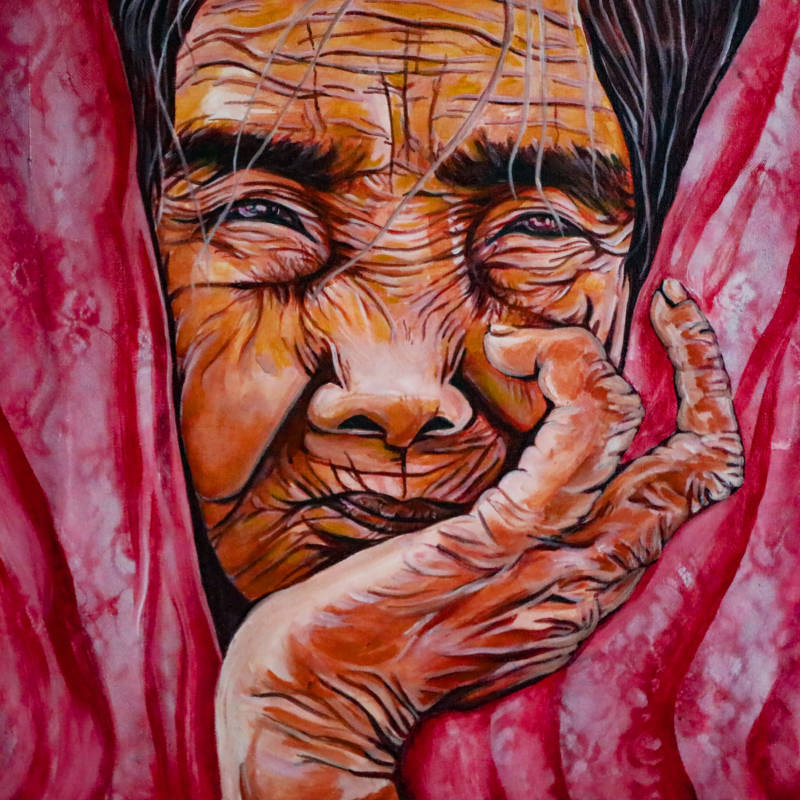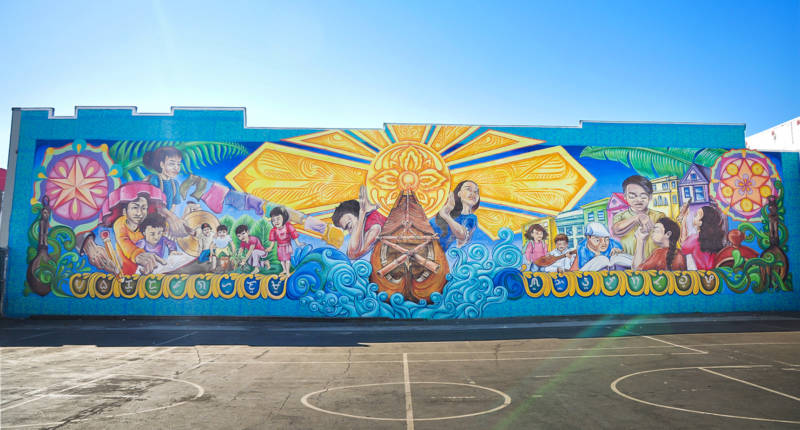Cece Carpio credits her great grandmother, who raised her for the first 12 years of her life, with giving her the desire to draw and create art. Then, it was a means of communication—Carpio’s great grandmother, a midwife, herbalist and “fierce matriarch,” could not read or write. So Carpio would make drawings to illustrate what she’d learned each day in school in the barangay (or barrio) of San Ildefonso in the Philippine province of Laguna.
Today, Oakland-based Carpio uses her art to tell other people’s stories. In her words, “I paint everyday people fighting for a more dignified existence.” Carpio’s practice is rooted in documenting and elevating the lives of contemporary indigenous people—emphasizing their stories are not just a history lesson about a bygone age. This goal is especially relevant, she says, “in this nation in this time when there’s people out there who want to erase our existence and disappear our story.”

After moving to the United States and experiencing her own sense of displacement from the indigenous community of her youth (her great grandmother is Igorot from the Cordillera region), Carpio found the Trust Your Struggle collective and a new sense of belonging. Dedicated to social justice, environmental sustainability and community activism, TYS members work with communities on public art projects to realize the images and messages that will resonate on their walls for years to come.

Carpio’s practice now takes her all over the world—she’s produced and exhibited work in the Philippines, the Fiji Islands, Cuba, Mexico, Guatemala, Nicaragua, Italy, Norway, Ireland, United Kingdom, India and Guam. Closer to home, she’s painted murals at the Filipino Education Center in San Francisco and received commissions from the City of Oakland, Yerba Buena Center for the Arts, UC Berkeley and the Oakland Museum of California.
Recently, Carpio had the opportunity to work with Lumad communities in Davao City in the Philippines. Displaced by large-scale mining, logging, agribusiness plantations, militarization and human rights violations, these communities, many from the Talaingod Manobo tribe, are trying to rebuild their homes and schools within an evacuation center.

